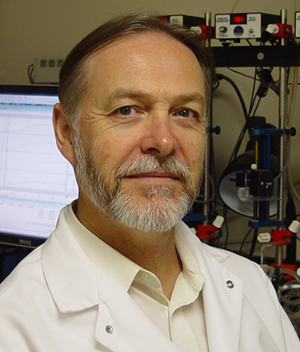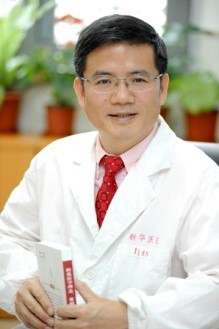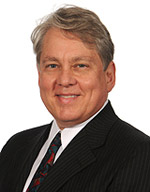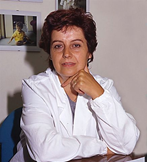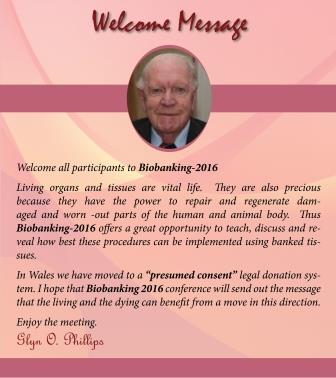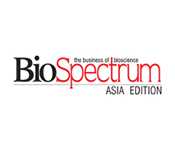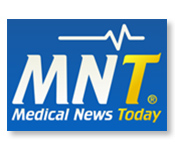Theme: Global Innovations in Tissue preservation and Biobanking Technologies
Biobanking 2016
Biobanking 2016 invites all the participants from all over the world to attend “2nd International Conference & Exhibition on Tissue Preservation and Biobanking” during September 12-13, 2016 in Philadelphia, USA which includes prompt keynote presentations, Oral talks, Poster presentations and Exhibitions.
Biobanking -2016 on behalf of its organizing Committee welcomes all the stem cell technologists, researchers, industrialists, young scientists as well as student and corporate delegates to participate and to have a great experience. The theme of the conference of Biobanking is based on “Global Innovations in Tissue preservation and Biobanking Technologies”. During Biobanking conferences, the International symposiums, B2B meetings, international workshops will also be organized to discuss the specific topics in the field of Stem cell technology. The conference also welcomes International exhibitions form corporate sectors to showcase the recent advancements in the tools and techniques. The conference also welcomes International exhibitions form corporate sectors to showcase the recent advancements in tools and techniques.
Why to attend???
With members from around the world focused on learning about Biobanking and its advances; this is your best opportunity to reach the largest assemblage of participants from the Tissue preservation and Biobanking community. Conduct presentations, distribute information, meet with current and potential scientists, make a splash with new drug developments, and receive name recognition at this 3-day event. World-renowned speakers, the most recent techniques, developments, and the newest updates in Biobanking are hallmarks of this conference.
Target Audience:
-
Biobanking Students, Scientists
-
Biobanking Faculty
-
Medical Colleges
-
Biobanking Associations and Societies
-
Business Entrepreneurs
-
Training Institutes
-
Cryo storage Companies
-
Data Management Companies
-
Global Biobanking Companies
-
Biobanking investors
Conference LLC invites all the participants from all over the world to attend “2nd International Conference & Exhibition on Tissue Preservation and Biobanking” during September 12-13, 2016 in Philadelphia, USA which includes prompt keynote presentations, Oral talks, Poster presentations and Exhibitions.
Tissue engineering
The developing field of tissue engineering aims to regenerate damaged tissues by combining cells from the body with bioresorbable materials, biodegradable hydrogel, biomimetic materials, nanostructures and nanomaterials, biomaterials and tissue implants which act as templates for tissue regeneration, to guide the growth of new tissue by using with the technologies. The global market for biomaterials, nanostructures and bioresorbable materials are estimated to reach $88.4 billion by 2017 from $44.0 billion in 2012 growing at a CAGR of 15%. Further the biomaterials market estimated to be worth more than 300 billion US Dollars and to be increasing 20% per year.
Related Conferences
8th World Congress on Stem Cell Research March 20-22, 2017 Orlando, USA; 5th International Conference and Exhibition on Cell and Gene Therapy May 19-21, 2016 San Antonio, USA; International Conference on Restorative Medicine October 24-26, 2016 Chicago, USA; International Conference on Molecular Biology October 13-15, 2016 Dubai, UAE; 2nd International Conference on Tissue preservation and Biobanking September12-13, 2016 Philadelphia USA; Conference on Cardiac Development, Regeneration and Repair April 3 – 7, 2016 Snowbird, Utah, USA; The Stem Cell Development May 22-26, 2016 Hillerød, Denmark; Hematopoietic Stem Cells: From the Embryo to the Aging Organism, June 3-5, 2016 Heidelberg, Germany; ISSCR Pluripotency: From basic science to therapeutic applications March 22-24, 2016 Kyoto, Japan
Human Cancer Biobank
The Cancer Human Biobank (caHUB) is a BBRB derived program that carries out specialized biospecimen and data procurements to support biospecimen science activities. The caHUB network consists of the following components-Biospecimen Source Sites (BSSs) are organizations, such as academic medical centers, rapid autopsy centers, and organ procurement organizations, that obtain patient consent, acquire specimens, and ship them to one of a number of program sites. The Comprehensive Biospecimen Resource (CBR) is a centralized site that assembles collection and shipping kits, receives most bio specimens from the BSSs for processing and storage, and ships biospecimen from the BSSs to the processing and analysis facilities. The CBR also generates H&E sections from FFPE blocks and produces digital images of these sections. The Comprehensive Data Resource (CDR) is a centralized data storage facility that obtains patient and specimen data from BSSs and other program sites that handle and analyses samples. The Pathology Resource Centre (PRC) is a network of board certified pathologists who review H&E sections from caHUB collected specimens as a quality control measure and also provide technical direction for caHUB Biospecimen collections.
Related Conferences:
International Conference on Cancer Immunology and Immunotherapy July 28-30, 2016 Melbourne, Australia; International Conference on Molecular Biology October 13-15, 2016 Dubai, UAE; 5th International Conference on Tissue Science and Regenerative Medicine September 12-14, 2016 Berlin, Germany; 7th World Congress on Cell and Stem Cell Research March 20-22, 2017 Orlando, USA ; 5th International Conference on Cell and Gene Therapy May 19-21, 2016 San Antonio, USA; Biobanking 2016, Jan 5–7 2016, London, UK; The Cancer Genome, Feb 7–11 2016, Banff, Canada; 11th Annual Biomarkers Congress, Feb 25–26 2016, Manchester, UK; Cell Death, Jan 28–30 2016, Amsterdam, Netherlands
Biorepository and Biospecimen
Biorepositories (or Biobanks) are “libraries” where bio specimens are stored and made available for scientists to study for clinical or research purposes. These biospecimen are commonly annotated with information about the patient from whom the biospecimen was taken, including data about their medical conditions and background. There are thousands of biorepositories in the United States, which vary widely by size, the type of biospecimen collected, and purpose. One of the biorepository’s highest priorities is protecting the privacy and sanctity of personal and medical information. Biospecimen are materials taken from the human body, such as tissue, blood, plasma, and urine that can be used for cancer diagnosis and analysis. When patients have a biopsy, surgery, or other procedure, often a small amount of the specimen removed can be stored and used for later research. Once these samples have been properly processed and stored they are known as human biospecimen. Doctors and researchers may analyze biospecimens to look for indications of disease in the donor. Biospecimens can confirm whether a disease is present or absent in a particular patient, but they also provide other information that may be useful to the physician or a researcher. Each sample may contain DNA, proteins, and other molecules important for understanding disease progression.
Related Conferences:
8th World Congress on Stem Cell Research March 20-22, 2017 Orlando, USA; 5th International Conference and Exhibition on Cell and Gene Therapy May 19-21, 2016 San Antonio, USA; International Conference on Restorative Medicine October 24-26, 2016 Chicago, USA; International Conference on Molecular Biology October 13-15, 2016 Dubai, UAE; 2nd International Conference on Tissue preservation and Biobanking September12-13, 2016 Philadelphia USA; Conference on Cardiac Development April 3 – 7, 2016 Snowbird, Utah, USA; The Stem Cell Development May 22-26, 2016 Hillerød, Denmark; Hematopoietic Stem Cells, June 3-5, 2016 Heidelberg, Germany; ISSCR Pluripotency: From basic science to therapeutic applications March 22-24, 2016 Kyoto, Japan
Disease based biobank
Disease oriented biobanks (which may also be referred to as clinical biobanks) are placed at the interface between clinical practice and research. They collect biological samples from patients, aiming at discovery and validation of genetic and non-genetic risk factors of diseases. They are usually established in hospitals and research institutes, and multi-centre collections can rise from clinical trials and genetic studies. Two domains of clinical biobanks can be distinguished: tissue banks and rare disease biobanks. They represent disease-oriented biobanks as they collect samples and data within the context of clinical care. Biological materials found in such biobanks are collected from patients and represent residual material of samples taken as part of an exploration or a clinical follow-up. Samples for clinical studies and diagnostic purposes have been collected throughout the history of medicine.
Related Conferences:
2nd World Congress on Infectious Diseases August 25-27, 2016 Philadelphia, USA; 4th International conference on Bacteriology and Infectious Diseases May 16-18, 2016 San Antonio, USA; 3rd World Congress on Hepatitis and Liver Diseases October 17-19, 2016 Dubai, UAE; 2nd International Conference on Influenza September 12-14, 2016 Berlin, Germany; 2nd International Conference on Retroviruses June 30-July 01, 2016 Cape Town, South Africa; 26th European Congress of Clinical Microbiology, April 9–12 2016, Istanbul, Turkey; Gut Microbiota, Metabolic Disorders and Beyond, April 17–21 2016, Newport, USA; Banff, Canada; Conference on Cellular Growth and Regeneration, Jan 10–14 2016, Breckenridge, USA ; New Approaches to Vaccines for Human and Veterinary Tropical Diseases, May 22–26 2016, Cape Town, South Africa.
Stem cell biobanking
Biobanks play a crucial role in biomedical research. The wide array of biospecimens (including blood, saliva, plasma, and purified DNA) maintained in biobanks can be described as libraries of the human organism. The process by which a tissue or aggregate of cells is kept alive outside of the organism from which it was derived (i.e., kept from decay by means of a chemical agent, cooling, or a fluid substitute that mimics the natural state within the organism).
Related Conferences
8th World Congress on Stem Cell Research March 20-22, 2017 Orlando, USA; 5th International Conference and Exhibition on Cell and Gene Therapy May 19-21, 2016 San Antonio, USA; International Conference on Restorative Medicine October 24-26, 2016 Chicago, USA; International Conference on Molecular Biology October 13-15, 2016 Dubai, UAE; 2nd International Conference on Tissue preservation and Biobanking September12-13, 2016 Philadelphia USA; Conference on Cardiac Development April 3 – 7, 2016 Snowbird, Utah, USA; The Stem Cell Development May 22-26, 2016 Hillerød, Denmark; Hematopoietic Stem Cells conference, June 3-5, 2016 Heidelberg.
Cryopreservation Methods
A process where cells, whole tissues, or any other substances susceptible to damage caused by chemical reactivity or time are preserved by cooling to sub-zero temperatures. At low enough temperatures, any enzymatic or chemical activity which might cause damage to the material in question is effectively stopped. Cryopreservation methods seek to reach low temperatures without causing additional damage caused by the formation of ice during freezing. Traditional cryopreservation has relied on coating the material to be frozen with a class of molecules termed Cryoprotectant. New methods are constantly being investigated due to the inherent toxicity of many cryoprotectants. By default it should be considered that Cryopreservation alters/compromises the structure and function of cells unless it is proven otherwise for a particular cell population. Tissue and fluid preservation, also known as biobanking, biorepository science, or cryopreservation often referred to as cryobanking has become mainstream and big business. According to research by the British Broadcasting Corporation, the global biobanking market in 2010 was over $140 billion dollars, with a projected 30% increase by the year 2015 towards fostering biobanking initiatives
Related Conferences:
8th World Congress on Stem Cell Research March 20-22, 2017 Orlando, USA; 5th International Conference and Exhibition on Cell and Gene Therapy May 19-21, 2016 San Antonio, USA; International Conference on Restorative Medicine October 24-26, 2016 Chicago, USA; International Conference on Molecular Biology October 13-15, 2016 Dubai, UAE; 2nd International Conference on Tissue preservation and Biobanking September12-13, 2016 Philadelphia USA; Conference on Cardiac Development April 3 – 7, 2016 Snowbird, Utah, USA; The Stem Cell Development May 22-26, 2016 Hillerød, Denmark; Hematopoietic Stem Cells conference, June 3-5, 2016 Heidelberg, Germany.
Vitrification
Although most living organisms are composed of large amounts of water, it is not inevitable that freezing these organisms results in ice-formation. Among amphibians and insects that can tolerate freezing, there is wide variation in the amount of freezing they can tolerate. Species of frogs can spend days or weeks "with as much as 65 percent of their total body water as ice". Some amphibians achieve their protection due to the glycerol manufactured by their livers. Glycerol is "antifreeze", it reduces ice formation and lowers freezing point. Glycerol (glycerin), like ethylene glycol (automobile anti-freeze) is cryoprotectants. The sugar glucose is also cryoprotectants — and arctic frogs have a special form of insulin that accelerates glucose release and absorption into cells as temperatures approach freezing. Cryoprotectants can make water harden like glass with no crystal formation a process called Vitrification. Freezing-damage to cells is due to the formation of ice-crystals. Entire organs can be solidified and stored at temperatures as low as -140° C. Scientists are working on ways to reduce the toxicity of the cryoprotectants used to make water vitrify to allow banking of organs for transplantation. At Alcor, we are optimistic that the toxicity that still does occur with vitrification of human organs will be reversible with future molecular repair technology.
Related Conferences:
8th World Congress on Stem Cell Research March 20-22, 2017 Orlando, USA; 5th International Conference and Exhibition on Cell and Gene Therapy May 19-21, 2016 San Antonio, USA; International Conference on Restorative Medicine October 24-26, 2016 Chicago, USA; International Conference on Molecular Biology October 13-15, 2016 Dubai, UAE; 2nd International Conference on Tissue preservation and Bio-banking September 12-13, 2016 Philadelphia, USA; Molecular and Cellular Basis of Growth and Regeneration, Jan 10–14 2016, Breckenridge, USA; Cell Culture 2016, Feb 2–4 2016, London, UK; Stem Cell Summit, Apr 25–27 2016, Boston, USA; ISBER 2016 Annual Meeting, April 5-8, 2016, Berlin, Germany; Biobanking 2016, Jan 5–7 2016, London, UK
Brain Banking
Research utilizing human post-mortem brain tissue has played a critical role in propelling our knowledge of diseases and disorders of the nervous system .however declining autopsy rates combined with an increased demand for well-characterized, high-quality tissue requires a new approach to brain banking and better outreach and communication with stakeholders. The NBB will coordinate the collection, evaluation, processing, storage and distribution of nervous system tissue and associated clinical data via a federated network of brain and tissue repositories that span the United States in a transparent and standardized way for use by the broader research community for the study of neurological, psychiatric and developmental disorder. The U.S. National Institutes of Health is establishing a network of five brain Biobanks to unify and coordinate access to human brain tissue for neuroscience research. Goal of bio bank is to increase the availability of human disease and control brains and related bio specimens by increasing public awareness of the value of tissue donation for understanding brain disorders and facilitate the distribution of high-quality, well-characterized human-post mortem brain tissue for the research community.
Related Conferences:
8th World Congress on Stem Cell Research March 20-22, 2017 Orlando, USA; 5th International Conference and Exhibition on Cell and Gene Therapy May 19-21, 2016 San Antonio, USA; International Conference on Restorative Medicine October 24-26, 2016 Chicago, USA; International Conference on Molecular Biology October 13-15, 2016 Dubai, UAE; 2nd International Conference on Tissue preservation and Bio-banking September 12-13, 2016 Philadelphia, USA; 18th International conference on Neuroscience, April 2–6 2016, Sweden, Austria; 6th Annual Traumatic Brain Injury Conference, May 11–12 2016, Washington, D.C., USA; Common Mechanisms of Neurodegeneration, June 12–16 2016, Keystone, USA; Neurology Caribbean Cruise, Aug 21–28 2016, Fort Lauderdale, USA; Annual Meeting of the German Society of Neurosurgery (DGNC), June 12–15 2016, Frankfurt am Main, Germany
Biobank Ethics
Ethical issues are commonly present in many aspects of Biobanking. The fact that Biobanks deal with human samples, invading an individual autonomy or limiting self-control, provokes a number of ethical issues. Who is actually competent to give informed consent and donate a sample? When individuals donate part of their body to a biobank, how is that human sample processed? Who is the owner of the sample? Who should decide how it should be used? Who has the right to know individual results of research? These and many more ethical dilemmas exist in the ethical framework of biobanks. With the recent rapid developments in biobanking, all of these issues are magnified with plenty of further new questions continuously arising. Ethical framework has been the most controversial issue in the domain of biobanking. Thus, it is not surprising that there is a substantial literature focusing on ethical dilemmas in biobanking, such as informed consent, privacy, protection, and returning of results to participants. For many years, researchers at CRB have provided constructive advice on how to deal with ethical aspects of research using human tissue material and personal data. For more than 80 years tissue has been derived from human bodies, stored, distributed and used for therapeutic, educational, forensic and research purposes as part of healthcare routine in most western countries.
Related Conferences:
International Conference on Case Reports March 31-April 02, 2016 Valencia, Spain; 2nd International Meeting on Clinical Case Reports April 18-20, 2016 Dubai, UAE; 3rd Experts Meeting on Medical Case Reports May 09-11, 2016 New Orleans, Louisiana, USA; 12th Euro Biotechnology Congress November 7-9, 2016 Alicante, Spain; 2nd International Conference & Exhibition on Tissue preservation and Biobanking September 12-13, 2016 Philadelphia, USA; 11th World Conference Bioethics October 20-22, 2015 Naples, Italy; Annual Conference Bioethics, May 6-7 2016 Cambridge, MA, USA; Annual Conference on Medical Ethics, Sep 8-10, 2016, Leuven, Belgium; 27th Maclean Conference on Clinical Medical Ethics, Nov 13-14, 2015, Chicago, USA; CFP: Global Forum on Bioethics in Research, Nov 3-4, 2015, Annecy, France
Biobank in Microbiology
Millions of biological samples, including cells of human, animal or bacterial origin, viruses, serum/plasma or DNA/RNA, are stored every year throughout the world for diagnostics and research. The purpose of this review is to summarize the resources necessary to set up a bio-banking facility, the challenges and pitfalls of sample collection, and the most important techniques for separation and storage of samples. Biological samples can be stored for up to 30 years, but specific protocols are required to reduce the damage induced by preservation techniques. Software dedicated to biological banks facilitate sample registration and identification, the cataloguing of sample properties (type of sample/specimen, associated diseases and/or therapeutic protocols, environmental information, etc.), sample tracking, quality assurance and specimen availability. Biobank facilities must adopt good laboratory practices and a stringent quality control system and, when required, comply with ethical issues.
Related Conferences:
4th International Congress on Bacteriology and Infectious Diseases May 16-18, 2016 San Antonio, USA; 2nd World Congress on Applied Microbiology October 31-November 02, 2016 Istanbul, Turkey; International Conference on Infectious Diseases & Diagnostic Microbiology Oct 3-5, 2016 Vancouver, Canada; International Conference on Water Microbiology July 18-20, 2016 Chicago, USA; 5th International Conference on Clinical Microbiology October 24-26, 2016 Rome, Italy; Axons: From Cell Biology to Pathology, 24–27 January 2016, Santa Fe, USA; 26th European Congress of Clinical Microbiology April 9–12 2016, Istanbul, Turkey; Conference on Gut Microbiota, Metabolic Disorders and Beyond, April 17–21 2016, Newport, USA; 7th European Spores Conference, April 18–20 2016, Egham, UK; New Approaches to Vaccines for Veterinary Tropical Diseases, May 22–26 2016, Cape Town, South Africa
Biobank in Genomics
The stated aim of the Genomics and Personalized Medicine Act is to secure the promise of personalized medicine for all Americans by expanding and accelerating genomics research and initiatives to improve the accuracy of disease diagnosis, increase the safety of drugs, and identify novel treatments, and for other purposes. This past May, Congressman Patrick Kennedy (D-RI) and Congresswoman Anna Eshoo (D-CA) re-introduced a personalized medicine bill to the U.S. House of Representatives. The bill was originally introduced in 2006 by then-Senator from Illinois Barack Obama. While HR 5440, also known as the Genomics and Personalized Medicine Act of 2010 (GPMA 2010) Despite its narrow definition of personalized medicine, GPMA 2010 includes several expansive initiatives. GPMA 2010 would appropriate $150 million for fiscal year 2011 to accomplish these initiatives, including the creation of an Office of Personalized Healthcare and several committees to address translational challenges of personalized medicine, the standardization of the collection of human biological samples, the funding of further research and education on personalized medicine, and the creation of a national Biobanks.
Related Conferences:
International Conference on Genetic Counseling and Genomic Medicine August 11-12, 2016 Birmingham, UK; World Congress on Human Genetics October 31- November 02, 2016 Valencia, Spain; International Conference on Molecular Biology October 13-15, 2016 Dubai, UAE; 3rd International Conference on Genomics & Pharmacogenomics September 21-23, 2015 San Antonio, USA; European Conference on Genomics and Personalized Medicine April 25-27, 2016 Valencia, Spain; Genomics and Personalized Medicine, Feb 7–11 2016, Banff, Canada; Drug Discovery for Parasitic Diseases, Jan 24–28 2016, Tahoe City, USA; Heart Failure: Genetics, Genomics and Epigenetics, April 3–7 2016, Snowbird, USA; Understanding the Function of Human Genome Variation, May 31– June 4 2016, Uppsala, Sweden; 5th Drug Formulation Jan25–27,2016,PhiladelphiaUSA
Next Generation Biobanking
Biorepositories provide a resource for researchers to increase understanding of complex diseases. Studies such as the Lung Genomics Research Consortium (LGRC), a two-year project launched in October 2009, are going a step further than standard biobanking practices and characterizing the samples with their molecular makeup. The molecular data can then be mined along with the clinical data. Led by National Jewish Health and funded by the National Heart, Lung and Blood Institute, a division of the National Institutes of Health (NIH), the LGRC project consists of five institutions, including Dana-Farber Cancer Institute. Collaborators in the project work with samples banked at the Lung Tissue Research Consortium (LTRC), which houses tissue samples and blood from lung disease sufferers, primarily chronic obstructive pulmonary disease (COPD), along with a rich set of clinical data from patients
Related Conferences:
International Conference on Next Generation Sequencing July 21-22, 2016 Berlin, Germany; 5th International Conference on Computational Systems Biology August 22-23, 2016 Philadelphia, USA; 7th International Conference on Bioinformatics October 27-28, 2016 Chicago, USA; International Conference on Synthetic Biology September 28-30, 2015 Houston, USA; 4th International Conference on Integrative Biology July 18-20, 2016 Berlin, Germany; 1st International Conference on Pharmaceutical Bioinformatics Jan 24–26 2016, Pattaya, Thailand; EMBL Conference: The Epitranscriptome, Apr 20–22 2016, Heidelberg, Germany; 2016 Whole-Cell Modeling Summer School, Apr 3–8 2016, Barcelona, Spain; 3rd International Molecular Pathological Epidemiology, May 12–13 2016, Boston, USA; 5th Drug Formulation, Jan 25–27 2016, Philadelphia, USA
Fertility biobanks
Fertility preservation is the effort to help cancer patients retain their fertility, or ability to procreate. Research into how cancer affects reproductive health and preservation options are growing, sparked in part by the increase in the survival rate of cancer patients. The main methods of fertility preservation are ovarian protection by GnRH agonists, cryopreservation of ovarian tissue, eggs or sperm, or of embryos after in vitro fertilization. The patient may also choose to use egg or sperm from a donor by third party reproduction rather than having biological children.
Related Conferences:
3rd International Conference on Gynecology and Obstetrics October 17-19, 2016 Dubai, UAE; 5th International Conference on Tissue Science and Regenerative Medicine September 12-14, 2016 Berlin, Germany; 8th World Congress on Stem Cell Research March 20-22, 2017 Orlando, USA; 2nd International Conference on Tissue preservation and Bio-banking September 12-13, 2016 Philadelphia, USA; International Conference on Restorative Medicine October 24-26, 2016 Chicago, USA; World Congress on Safe and Efficient IVF, Oct 15-16 2015 New York City, USA; 6th Congress of the Asia Pacific Initiative on Reproduction, April 8–10 2016, Jakarta, Indonesia; Stem Cell Conference June 19–21 2016, San Francisco, USA; Stem Cell Research and Regenerative Medicine Conference, April 25–26 2016, Boston, USA; Stem Cells and Regeneration in the Digestive Organs, Mar 13–17 2016, Keystone, USA
Germplasm Bank
The Germplasm Bank is committed to providing healthy and viable seed, as well as reliable information on the collections of maize and wheat genetic resources it preserves; carrying out the activities required for seed introduction, processing, conservation, and distribution; complying with international agreements and standards; and hiring qualified staff to ensure that the requirements of our clients are met. The Bank is thus committed to complying with ISO 9001:2008 and continually improving the effectiveness of the Quality Management System. The Global Plan of Action (GPA) for plant genetic resources for food and agriculture aims to promote the conservation, sustainable utilization, and fair and equitable sharing of benefits of plant genetic resources. It is designed to contribute to the implementation of the Convention on Biological Diversity in the field of food and agriculture. The Plant Genetic Resource Center's specially designed vaults currently hold some 28,000 samples of maize and teosinte, a wild relative of maize, and 140,000 Triticeae samples, including bread wheat, durum wheat, and triticale (a man-made crop developed by crossing wheat with rye), with significant collections of barley, rye, and primitive and wild relatives of wheat. The Center also maintains a living collection of Tripsacum, a more distant maize relative.
Related Conferences:
4th International Conference on Plant Genomics July 14-15, 2016 Brisbane, Australia; 8th World Congress on Stem Cell Research March 20-22, 2017 Orlando, USA; 2nd International Conference on Tissue preservation and Biobanking September 12-13, 2016 Philadelphia, USA, USA; World Congress on Human Genetics October 31- November 02, 2016 Valencia, Spain; 12th Euro Biotechnology Congress November 7-9, 2016 Alicante, Spain; 2nd International Conference on Germplasm of Ornamentals, Aug 8-12, 2016, Atlanta, USA; 7th International conference on Crop Science, Aug 14–19 2016, Beijing, China; Plant Epigenetics: From Genotype to Phenotype, Feb 15–19 2016, Taos, USA; Germline Stem Cells Conference, June 19–21 2016, San Francisco, USA; Conference on Water Stress in Plants, 29 May – 3 June 2016, Ormont-Dessus, Switzerland
Immune banking
Biobanking of the human samples to support translational research is a global movement and is now being well established across all continents. Major challenges lie in the fact on how to obtain; process and supply samples to support research projects. Biobanking activities overlap with the Anatomical Pathology activities. Collection, embedding, sectioning and storing of collected samples are done daily. All samples are provided to the researcher with the de-identified path report and verification. Researchers usually concentrate on gene expression techniques. When it comes to protein expression in the tissue, immunohistochemistry is method performed. Diagnostic laboratories perform routine immunohistochemistry on a large number of more commonly used antibodies such AE1/AE3; CD45; ER/PR/Her2. Diagnostic laboratories have no spare time that is required to standardize and optimize novel antibodies which researchers are applying in their study. This is the point where we are able to offer support and utilize resources with a dual benefit. We have been optimizing anti NR1D1 (nuclear receptor for squamous cell carcinoma) for thyroid study; caspase 3, 8 and 9 (cell apoptosis) in breast cancer study; F4/80 in mouse model for macrophage/inflammation detection just to mention few. We support research work and continue to learn more about possibilities of immunohistochemistry. All slides obtained are scanned to get digital image. All results obtained from immunohistochemistry are interpreted by anatomical pathologist.
Related Conferences:
2nd International Conference and Exhibition on Antibodies July 14-15, 2016 Philadelphia, USA; 2nd International Conference on Innate Immunity July 21-22, 2016 Berlin, Germany; 2nd International Congress on Neuroimmunology and Therapeutics March 31-April 02, 2016 Atlanta, USA; International Conference on Cancer Immunology and Immunotherapy July 28-30, 2016 Melbourne, Australia; 5th International Conference on Immunology October 24-26, 2016 Chicago, USA; Cancer Vaccines: Targeting Cancer Genes for Immunotherapy, Mar 6–10 2016, Whistler, Canada; Systems Immunology: From Molecular Networks to Human Biology, Jan 10–14 2016, Big Sky, USA; Novel Immunotherapeutics Summit, Jan 25–26 2016, San Diego, USA;26th European Congress of Clinical Microbiology, April 9–12 2016, Istanbul, Turkey
Biobank Applications
Population banks: Biomarkers of susceptibility and population identity and their operational substrate is germinal-line DNA from a huge number of healthy donors, representative of a concrete country/region or ethnic cohort. Disease-oriented banks for epidemiology: biomarkers of exposure, using a huge number of samples, usually following a healthy exposed cohort/case–control design. Disease-oriented general biobanks (i.e. tumor banks): biomarkers of disease through prospective and/or retrospective collections of diseased tissues and non-diseased tissues and their derivate (DNA/RNA/proteins), usually associated to clinical data and some-times associated to clinical trials for prognostic, diagnostic and therapeutic purpose.
Related Conferences:
8th World Congress on Stem Cell Research March 20-22, 2017 Orlando, USA; 5th International Conference and Exhibition on Cell and Gene Therapy May 19-21, 2016 San Antonio, USA; International Conference on Restorative Medicine October 24-26, 2016 Chicago, USA; International Conference on Molecular Biology October 13-15, 2016 Dubai, UAE; 2nd International Conference on Tissue preservation and Biobanking September12-13, 2016 Philadelphia USA; Conference on Cardiac Development April 3 – 7, 2016 Snowbird, Utah, USA; The Stem Cell Development May 22-26, 2016 Hillerød, Denmark; Hematopoietic Stem Cells: From the Embryo to the Aging Organism, June 3-5, 2016 Heidelberg, Germany; ISSCR Pluripotency: From basic science to therapeutic applications March 22-24, 2016 Kyoto, Japan
Biobanking Informatics
The sequencing of the human genome, completed at the dawn of the twenty-first century, allows researchers to integrate new data on genetic risk factors with demographic and lifestyle data collected via modern communication technologies. The technical prerequisites now exist for merging these cascades of molecular genetic information, not only to national health registers, but also to epidemiology and clinical data. Long-term storage of biological materials and data is a critical component of any epidemiological or clinical study. In designing Biobanks, informatics plays a vital role for the handling of samples and data in a timely fashion. Biobank Informatics contains important elements concerning definition, structure, and standardization of information that has been gathered from a multitude of sources from population-based registries, biobanks, patient records, and from large-scale molecular measurements.
Related Conferences:
International Conference on Next Generation Sequencing July 21-22, 2016 Berlin, Germany; 5th International Conference on Computational Systems Biology August 22-23, 2016 Philadelphia, USA; 7th International Conference on Bioinformatics October 27-28, 2016 Chicago, USA; International Conference on Synthetic Biology September 28-30, 2015 Houston, USA; 4th International Conference on Integrative Biology July 18-20, 2016 Berlin, Germany; 1st International Conference on Pharmaceutical Bioinformatics Jan 24–26 2016, Pattaya, Thailand; EMBL Conference: The Epitranscriptome, Apr 20–22 2016, Heidelberg, Germany; 2016 Whole-Cell Modeling Summer School, Apr 3–8 2016, Barcelona, Spain; 3rd International Molecular Pathological, May 12–13 2016, Boston, USA; 5th Drug Formulation Summit, Jan 25–27 2016, Philadelphia, USA
Market Analysis in Biobanking
The global biopreservation market is expected to reach USD 3,731.03 Million by 2020 from USD 2,150.48 Million in 2015, growing at a CAGR of 11.65% between 2015 and 2020. Biopreservation is used to ensure the stability, quality and purity of biospecimens. With a CAGR of 23.7%, global market value for cryopreservation equipment used in stem cells industry is anticipated to worth US$2.2 billion by 2015. On a global scale, North America accounts for nearly 35% of the market and will likely witness a higher growth rate in the upcoming years, in comparison with UK biobanks. While US accounts for the highest share of the global market value on a country basis, India and China surpasses the US in terms of growth rate anticipated in the near future. As per our analysis, freezers represent more than half of the cryopreservation equipment market value while Cyropreservative reagents stand for a share of close to 20%. The global biobanking market is poised for rapid growth between 2015 and 2020. The drivers include increasing healthcare expenditure, growing demand for preserving new-born’s stem cells, increasing R&D spending on research, and increasing adoption of regenerative medicine.
Related Conferences
World Congress on Human Genetics October 31- November 02, 2016 Valencia, Spain; 5th International Conference on Tissue Science and Regenerative Medicine September 12-14, 2016 Berlin, Germany; 2nd International Congress on Neuroimmunology March 31-April 02, 2016 Atlanta, USA; 3rd International Conference on Gynecology and Obstetrics October 17-19, 2016 Dubai, UAE; 12th Euro Biotechnology Congress November 7-9, 2016 Alicante, Spain; 4th International Conference on Integrative Biology July 18-20, 2016 Berlin, Germany; European Conference on Genomics and Personalized Medicine April 25-27, 2016 Valencia, Spain; 3rd International Conference on Epidemiology Meeting, May 12–13 2016, Boston, USA; 5th Drug Formulation and Bioavailability Summit, Jan 25–27 2016, Philadelphia, USA; Germline Stem Cells Conference, June 19–21 2016, San Francisco, USA
The global biobanking market is expected to reach USD 3,731.03 Million by 2020 from USD 2,150.48 Million in 2015, growing at a CAGR of 11.65% between 2015 and 2020. Biopreservation is used to ensure the stability, quality and purity of biospecimens.
The global biopreservation market is poised for rapid growth between 2015 and 2020. The drivers include increasing healthcare expenditure, growing demand for preserving new-born’s stem cells, increasing R&D spending on research, and increasing adoption of regenerative medicine.
With a CAGR of 23.7%, global market value for cryopreservation equipments used in stem cells industry is anticipated to worth US$2.2 billion by 2015. On a global scale, North America accounts for nearly 35% of the market and will likely witness a higher growth rate in the upcoming years, in comparison with Asia-Pacific. While US accounts for the highest share of the global market value on a country basis, India and China surpasses the US in terms of growth rate anticipated in the near future. As per our analysis, freezers represent more than half of the cryopreservation equipments market value while cropreservative reagents stand for a share of close to 20%.
Increasing healthcare expenditure will aid the growth of the biopreservation market. Healthcare expenditure constitutes a significant part of the development budget of all countries. It consists of spending by both public and private sources on medical goods and services. Rapid economic development across the globe is expected to improve access to quality healthcare. Increasing healthcare expenditure will lead to a rise in the demand for quality healthcare and will be an important growth driver for the biopreservation market.
According to estimates from the World Bank, global healthcare spending increased at a CAGR of 6.97% from 2003 to 2013, from USD 3,786 Billion in 2003 to USD 7,427 Billion in 2013. In this period, public healthcare spending increased at a CAGR of 7.28%, from USD 2,198 Billion in 2003 to USD 4,440 Billion in 2013. This high growth rate, along with the substantial size of healthcare spending, will act as an important driver for biobanks, hospitals and gene banks, which are the major end-user segments of the biopreservation media & equipment market.
The biopreservation market is segmented on the basis of by products, biospecimens, applications, and end users. Products segments included in the report are biopreservation media & biopreservation equipment. Biopreservation media had the largest share of the biopreservation media & equipment market in 2015 and biopreservation equipment are expected to grow at the highest CAGR between 2015 and 2020. The biopreservation media segment is further divided on the basis of type into nutrient media, sera and growth factors & supplements. Biopreservation equipment segment is further divided into temperature control systems, incubators, centrifuges, alarms & monitoring systems, accessories and other equipment. Temperature control systems segment is further classified into freezers, refrigerators, cryogenic storage systems, thawing equipment.
On the basis of biospecimens, the report is segmented into human tissue samples, stem cells, organs and other biospecimens. On the basis of applications; the report is segmented into therapeutic, research, clinical trials and other applications. The therapeutic applications had the largest share of the biopreservation media & equipment market in 2015. The research applications are expected to one of the fastest growing applications between 2015 and 2020.The scope of US biobanks are morr than the UK biobanks.
The geographic segments included in this report are North Americas, Europe, Asia and Rest of the World (RoW). North America has the largest share of this market in 2015, while Asia is expected to grow at the fastest rate during the forecast period. Growth in the Asian biopreservation media & equipment market will primarily be driven by the increasing healthcare spending and growing population in this region.
The major players in the biopreservation media, Cryopreservation & equipment market include Thermo Fisher Scientific, Inc. (U.S.), Sigma-Aldrich Corporation (U.S.), VWR Corporation (U.S.), Biolife Solutions, Inc. (U.S.), Lifeline Scientific, Inc. (U.S.), Cesca Therapeutics, Inc. (U.S.), BioCision, LLC (U.S.), Core Dynamics, Ltd. (Israel), Custom Biogenic Systems, Inc. (U.S.), So-Low Environmental Equipment Co., Inc. (U.S.) and Princeton Cryotech, Inc. (U.S.).
Conference Highlights
- Human cancer biobank
- Biorepository & Biospecimen
- Disease based biobank
- Cryopreservation Methods
- Vitrification
- Brain Banking
- Biobank Ethics
- Biobank in Microbiology
- Next Generation Biobanking
- Biobank in Genomics
- Fertility biobanks
- Germplasm Bank
- Immune banking
- Biobank Applications
- Biobanking Informatics
- Market Analysis in Biobanking
- Tissue engineering
- Stem cell Biobanking
To share your views and research, please click here to register for the Conference.
To Collaborate Scientific Professionals around the World
| Conference Date | September 12-13, 2016 | ||
| Sponsors & Exhibitors |
|
||
| Speaker Opportunity Closed | Day 1 | Day 2 | |
| Poster Opportunity Closed | Click Here to View | ||
Useful Links
Special Issues
All accepted abstracts will be published in respective Our International Journals.
Abstracts will be provided with Digital Object Identifier by





